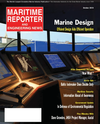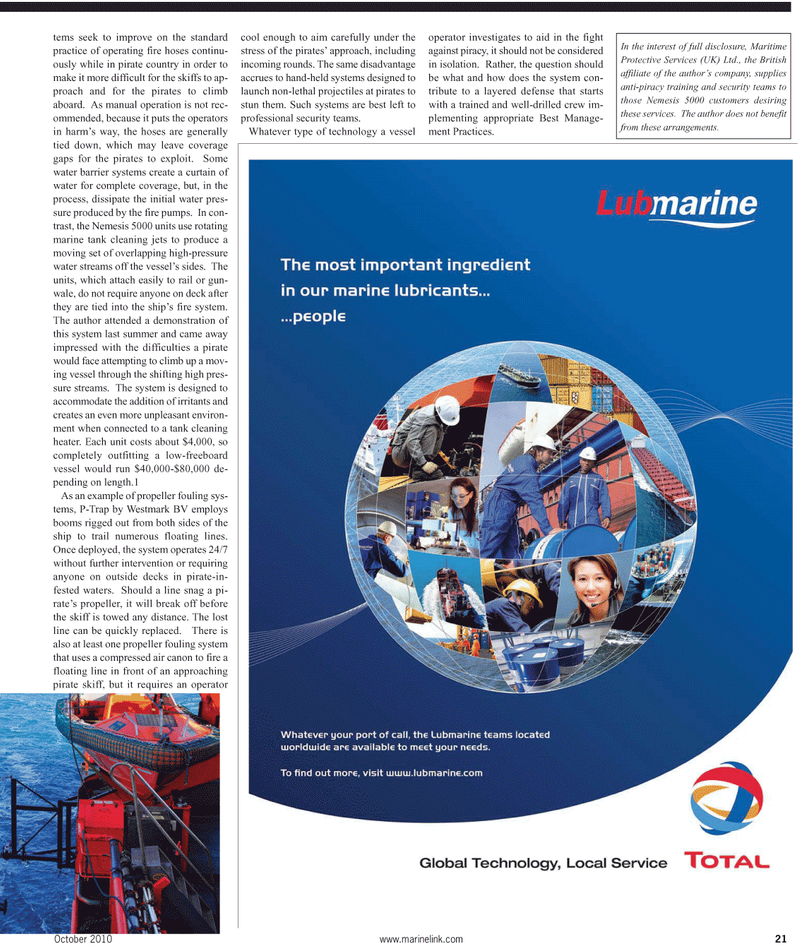
Page 21: of Maritime Reporter Magazine (October 2010)
Marine Design Annual
Read this page in Pdf, Flash or Html5 edition of October 2010 Maritime Reporter Magazine
October 2010 www.marinelink.com 21 tems seek to improve on the standard practice of operating fire hoses continu- ously while in pirate country in order to make it more difficult for the skiffs to ap- proach and for the pirates to climb aboard. As manual operation is not rec- ommended, because it puts the operators in harm’s way, the hoses are generally tied down, which may leave coverage gaps for the pirates to exploit. Some water barrier systems create a curtain of water for complete coverage, but, in the process, dissipate the initial water pres- sure produced by the fire pumps. In con- trast, the Nemesis 5000 units use rotating marine tank cleaning jets to produce a moving set of overlapping high-pressure water streams off the vessel’s sides. The units, which attach easily to rail or gun- wale, do not require anyone on deck after they are tied into the ship’s fire system.
The author attended a demonstration of this system last summer and came away impressed with the difficulties a pirate would face attempting to climb up a mov- ing vessel through the shifting high pres- sure streams. The system is designed to accommodate the addition of irritants and creates an even more unpleasant environ- ment when connected to a tank cleaning heater. Each unit costs about $4,000, so completely outfitting a low-freeboard vessel would run $40,000-$80,000 de- pending on length.1
As an example of propeller fouling sys- tems, P-Trap by Westmark BV employs booms rigged out from both sides of the ship to trail numerous floating lines.
Once deployed, the system operates 24/7 without further intervention or requiring anyone on outside decks in pirate-in- fested waters. Should a line snag a pi- rate’s propeller, it will break off before the skiff is towed any distance. The lost line can be quickly replaced. There is also at least one propeller fouling system that uses a compressed air canon to fire a floating line in front of an approaching pirate skiff, but it requires an operator cool enough to aim carefully under the stress of the pirates’ approach, including incoming rounds. The same disadvantage accrues to hand-held systems designed to launch non-lethal projectiles at pirates to stun them. Such systems are best left to professional security teams.
Whatever type of technology a vessel operator investigates to aid in the fight against piracy, it should not be considered in isolation. Rather, the question should be what and how does the system con- tribute to a layered defense that starts with a trained and well-drilled crew im- plementing appropriate Best Manage- ment Practices.
In the interest of full disclosure, Maritime
Protective Services (UK) Ltd., the British affiliate of the author’s company, supplies anti-piracy training and security teams to those Nemesis 5000 customers desiring these services. The author does not benefit from these arrangements.

 20
20

 22
22
